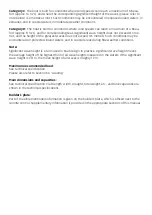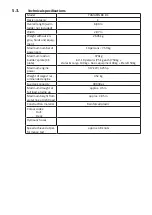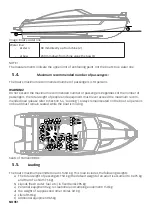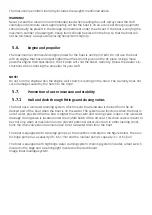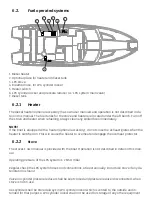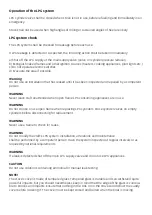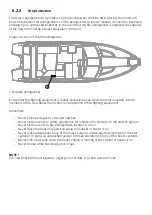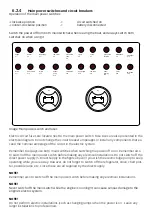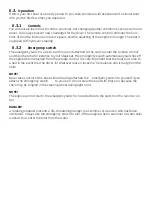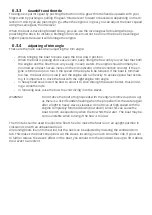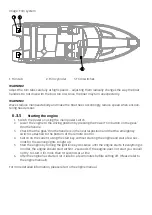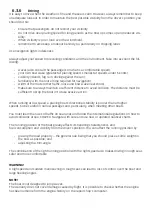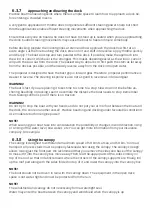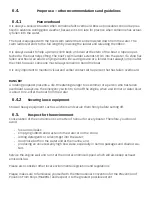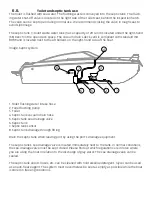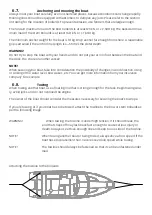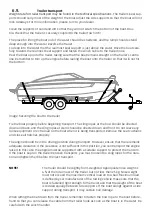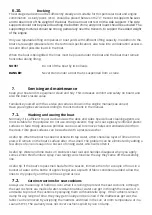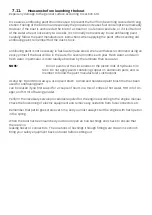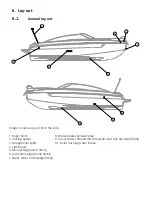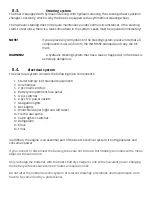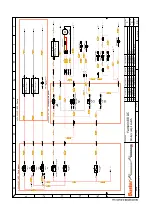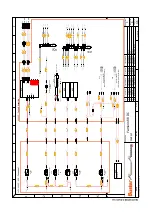
6.3.7
Approaching and leaving the dock
Practise boat manoeuvring skills where there is ample space to learn how to approach a dock be-
fore entering a crowded marina.
A very gentle application of throttle does not generate sufficient steering power. Sharp but short
throttle applications enable efficient steering movements when approaching the dock.
Ensure that everyone on board who does not have to stand up is seated when you are approaching
the dock. Sudden steering movements may cause the boat to heel and injure somebody.
Before docking, prepare the mooring lines at stern and bow. Approach the dock bow first at an
acute angle. Just before touching the dock, steer into it and shift into reverse. Apply throttle quickly
and sharply. The boat will stop and turn parallel to the dock. If possible, make the approach into
the wind or current, whichever is the strongest. This makes departing easier, as the wind or current
will push the bow out from the dock. The easiest way to depart is to first push the stern as far away
from the dock as possible, and then slowly reverse away from the dock into open water.
The propeller is designed to have the best grip in forward gear. Therefore, propeller performance is
weaker in reverse. The steering response is also not as good in reverse as in forward gear.
WARNING!
The boat is fast. If you are planing, it takes time to come to a stop. Slow down in time before an-
choring, beaching or docking. Learn to estimate the distance the boat needs to stop. Remember
that steering control is poor if there is no traction.
WARNING!
Do not try to stop the boat with your hands, and do not put your arm or foot between the boat and
the dock, the shore or another vessel! Practise beaching and docking under favourable conditions!
Use moderate but firm engine power!
NOTE!
When securing your boat, take into consideration the possibility of changes in wind direction, rising
or sinking of the water level, bow wakes, etc. You can get more information from your insurance
company, for example.
6.3.8
Using the canopy
The canopy is designed to withstand a maximum speed of 30 knots at sea, and 50 km/h in road
transport. All press studs must be properly fastened when using the canopy. The canopy’s design
allows raising just the front part. We recommend that you remove the sides and back of the canopy
to make it fit into the canopy box more easily. Then, fold the upper parts of the sides entirely on
top of the roof, so that no fabric remains where the corners of the canopy supports are. Finally, roll
up the roof part along with the sides folded on top of it, and lower the canopy into the canopy box.
NOTE!
The boat should not be driven in rain with the canopy down. The equipment in the open deck
space is not water-tight and must be protected from the rain.
NOTE!
The windshield and canopy do not necessarily form a watertight seal.
Water may enter the boat between the canopy and windshield when the canopy is up
Summary of Contents for 88 Day Cruiser
Page 1: ...Yamarin 88 Day Cruiser Owner s manual Käyttäjän käsikirja Användarhandbok ...
Page 2: ......
Page 3: ...Yamarin 88 Day Cruiser Owner s manual ...
Page 44: ......
Page 45: ...Yamarin 88 Day Cruiser Käyttäjän käsikirja ...
Page 85: ...Yamarin 88 Day Cruiser Användarhandbok ...
Page 125: ......

